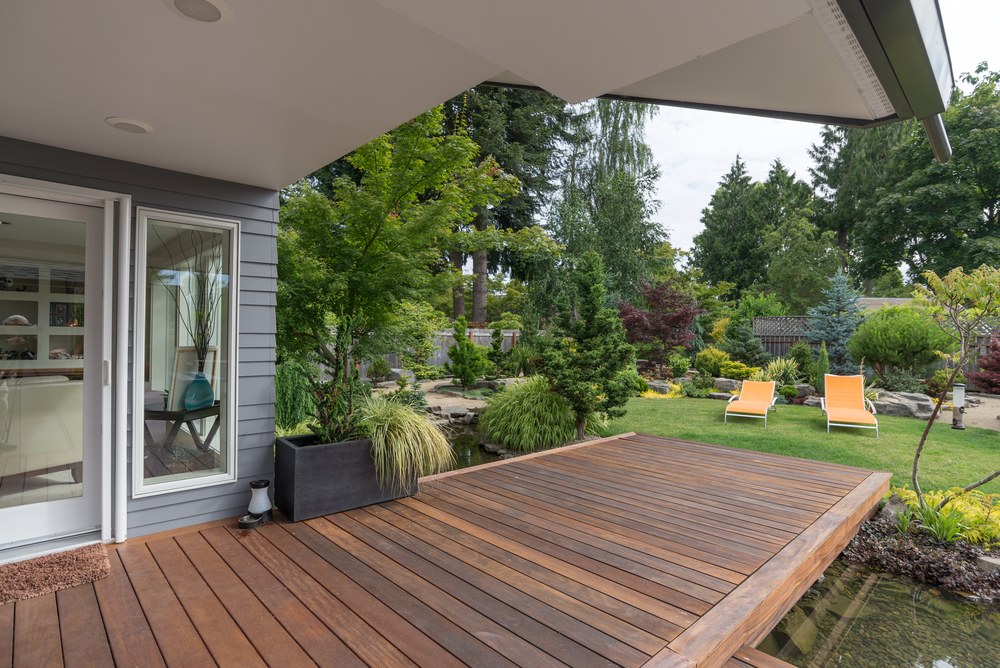
Composite vs. Wood Decking: Which One is Right for Your Home?
When it comes to choosing decking material for your home, there are many options available. Among the most popular choices are wood decking and composite decking. Both have distinct advantages and drawbacks, making the decision between the two a crucial one for homeowners. Whether you are building a new deck or replacing an old one, understanding the differences between wood decking and composite decking is essential to making an informed decision. In this blog, we will explore both materials, their benefits, and the factors you should consider when choosing decking material for your outdoor space.
The Appeal of Wood Decking
Wood decking has been the go-to choice for many homeowners for decades. The timeless look of natural wood can complement almost any type of home and outdoor decor. The primary appeal of wood decking lies in its authentic appearance, which is often seen as more aesthetically pleasing due to its natural grains, textures, and rich colors. Whether you opt for pressure-treated lumber, cedar, or redwood, wood offers a warm, organic look that is hard to replicate with synthetic materials.
Aside from aesthetics, wood decking is often less expensive than composite decking. Pressure-treated wood, in particular, is relatively affordable and widely available, making it a budget-friendly option for homeowners looking to build a deck without breaking the bank. Additionally, wood decking is easier to work with for DIY projects, especially for those with some carpentry experience. This can be a significant advantage for homeowners who prefer to take on their home improvement projects themselves.
However, wood decking does come with its own set of challenges. Over time, natural wood can be susceptible to weathering, fading, and damage from moisture. Without proper care, wood decks can splinter, warp, or develop mold and mildew. Regular maintenance, including sealing, staining, and cleaning, is required to keep wood decks looking their best. This ongoing upkeep can be time-consuming and costly, especially when the deck is exposed to harsh weather conditions.
The Rise of Composite Decking
In recent years, composite decking has gained significant popularity among homeowners. Composite decking is made from a blend of wood fibers and plastic, resulting in a durable, low-maintenance material that mimics the appearance of wood without many of the drawbacks. Composite decking is engineered to resist moisture, rot, and insect damage, making it a great option for areas with high humidity or harsh climates.
One of the key benefits of composite decking is its minimal maintenance requirements. Unlike wood decking, which needs to be regularly sealed or stained to protect against the elements, composite decking is designed to be virtually maintenance-free. It does not require sanding, staining, or sealing, and it can be easily cleaned with just soap and water. This can save homeowners both time and money in the long run, as there is less need for ongoing care.
Composite decking is also highly durable and long-lasting. It is resistant to fading, staining, and scratching, and it won’t splinter or warp over time. This makes it a particularly attractive option for families with young children or pets, as it provides a safer and more durable surface for outdoor play. Additionally, composite decking is available in a wide range of colors and textures, offering a more uniform and modern appearance than wood decking. Many manufacturers also offer composite decking that closely mimics the look of exotic hardwoods, allowing homeowners to enjoy the luxurious appearance of wood without the associated maintenance.
However, composite decking does come at a higher initial cost than wood decking. The materials are generally more expensive, and the installation process may require a professional, which can add to the overall cost of the project. While the long-term savings in maintenance and durability can offset the upfront investment, the higher initial price may not be ideal for every homeowner’s budget.
Comparing Durability and Maintenance
When comparing wood decking vs composite decking, one of the most significant factors to consider is durability and maintenance. As mentioned earlier, wood decking is susceptible to weathering, fading, and damage from moisture. In addition, wooden decks can attract termites and other pests, which can cause serious damage if left untreated. Even pressure-treated wood, which is chemically treated to resist rot, can still warp or crack over time if it is not properly maintained.
In contrast, composite decking is highly resistant to the elements and requires little to no maintenance. It is designed to withstand moisture, UV rays, and pests without deteriorating. While composite decking can be prone to scratching or staining from certain substances, these issues are generally less common than the problems that affect wood decking. Composite materials also do not splinter, making them a safer choice for families with children or pets.
The longevity of composite decking is another key advantage. Many composite decks come with long-term warranties, often lasting 25 years or more, ensuring that the material will not fade, warp, or suffer from major defects. This can give homeowners peace of mind knowing that their deck will continue to look good and perform well for many years without the need for frequent repairs or replacements.
Environmental Impact and Sustainability
When choosing decking material, many homeowners are also concerned about the environmental impact of their decision. Both wood and composite decking have their own environmental pros and cons, which should be considered if sustainability is a priority for you.
Wood decking, particularly when sourced from sustainable forests, is a renewable resource that can be considered environmentally friendly. Cedar and redwood, for example, are naturally resistant to insects and decay, which means they often require fewer chemicals during the manufacturing process. However, deforestation and unsustainable logging practices can pose significant environmental concerns, especially if the wood is not sourced responsibly. Additionally, wood decks require regular maintenance, such as staining and sealing, which involves the use of chemicals that can have environmental consequences.
Composite decking, on the other hand, is often made from recycled materials, such as wood fibers and plastic, which can help reduce waste. Many manufacturers use recycled content in their composite decking products, making it a more sustainable option. However, composite decking is not biodegradable and will not break down naturally in a landfill. Furthermore, the manufacturing process for composite decking can be energy-intensive, which raises concerns about its overall environmental footprint.
Ultimately, both wood and composite decking can be environmentally responsible choices depending on how the materials are sourced and manufactured. Homeowners who are particularly concerned about sustainability should look for products that use recycled or sustainably sourced materials and consider the long-term environmental impact of the deck’s upkeep.
Cost Considerations: Which Is More Affordable?
Cost is always a significant factor when choosing decking material, and when comparing wood decking vs composite decking, there is a noticeable difference in price. On average, wood decking tends to be the more affordable option in terms of initial material costs. Pressure-treated lumber, the most commonly used wood for decking, is relatively inexpensive, and it can be a cost-effective solution for homeowners on a budget. However, the lower initial cost of wood decking can be offset by the ongoing maintenance requirements. Over time, the cost of sealing, staining, and repairing a wood deck can add up, making it a more expensive option in the long run.
Composite decking, while more expensive upfront, offers savings in maintenance costs due to its low-maintenance nature. Since composite decks do not require staining or sealing, homeowners can save money on these regular upkeep tasks. Additionally, composite decking’s durability means fewer repairs or replacements will be needed over time, which can result in long-term cost savings. The higher installation cost of composite decking may also be a consideration, as professional installation may be required, but this can be mitigated if you have the skills to install the decking yourself.
In the end, the total cost of wood decking vs composite decking depends on how long you plan to stay in your home, your maintenance preferences, and your overall budget. While wood decking may be cheaper upfront, composite decking can offer greater value over time due to its durability and low maintenance needs.
Making the Right Choice for Your Home
When deciding between wood decking and composite decking, the right choice ultimately depends on your preferences, budget, and the specific needs of your outdoor space. Wood decking offers a classic, natural look and a more affordable initial cost, but it requires more maintenance to keep it looking its best. Composite decking, on the other hand, offers long-term durability, minimal maintenance, and a modern appearance, though it comes with a higher upfront cost.
Consider factors like climate, maintenance tolerance, aesthetic preferences, and environmental impact when making your decision. Whether you choose wood or composite decking, both materials have their advantages and can provide a beautiful and functional outdoor living space for years to come. By carefully weighing these factors, you can make an informed decision that best suits your lifestyle and your home.
Need a General Contractor in Austinburg, OH?
Here at Ron’s Repair, we’re passionate about turning your house into the home of your dreams. Whether it’s a quick repair, a full remodel, or even a brand-new construction project, we’ve got you covered! We’re proud to serve Ashtabula and the surrounding areas with reliable, high-quality craftsmanship that you can trust. Let us help you maintain or transform your space—no job is too big or too small for our experienced team. Call us today for a free estimate, and let’s bring your vision to life together!
More...
Categorised in: Decking





